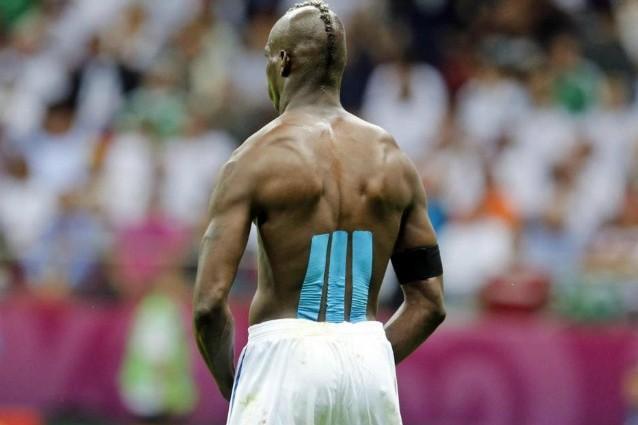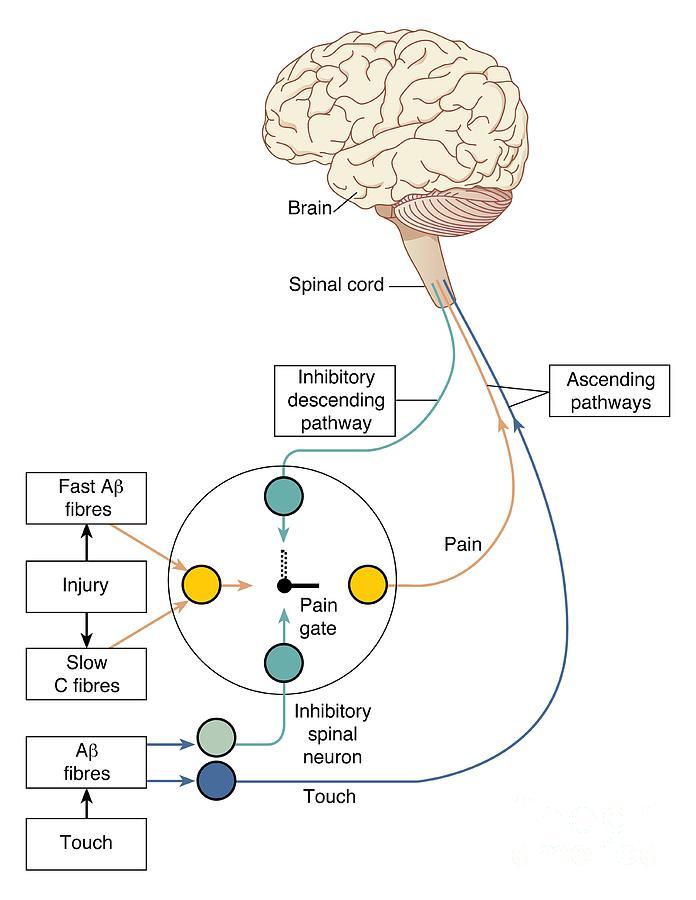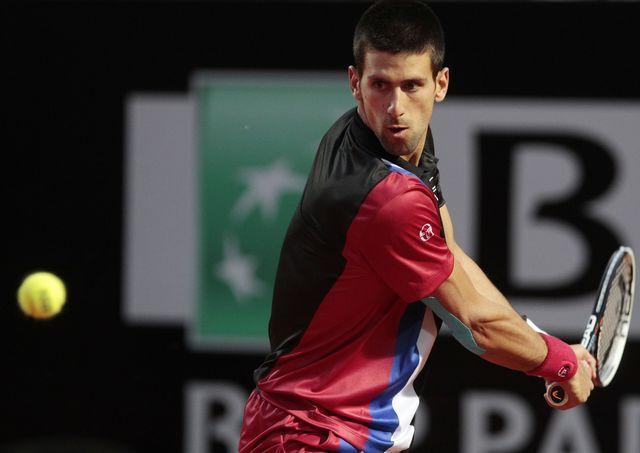Quick help with muscle and joint pain (and after injury) before visiting the doctor
I recently arranged on my page on the social network a survey “Have you ever had back / joint pain? My friends responded, whose average age is 28-30 years (± 4 years). To my great surprise, of the 55 who answered, only two voted for the option "No, never." 16 people answered “every day or several times a week”, 22 - “occasionally, a couple of times a month”, 15 - “less than once a month”.
This, unfortunately, is extremely correlated with the results achieved by many of my colleagues dealing with problems with the musculoskeletal system (hereinafter - ODA), working with athletes. ODA violations “become younger”, and there are many reasons for this - from nutrition to the lack of adequate physical culture.
Since I often have to remove pain in muscles and joints (and then treat its cause), I decided to share what I use in complex treatment , but that, nevertheless, it can be used as a self-help from the beginning get sick "to" reached the doctor. " And the name of this method is kinesiological taping ( kinesis with dr. Grech . “Movement related to movement”, kinesiology (logos with other grech. “Teaching”) is a scientific and practical discipline studying muscular movement in all its manifestations) .
So briefly about the history of the method.
Sports taping has been around for a long time. In essence, sports taping is the creation of an individual rigid bandage on the joints to maintain them (replacing with soft orthoses).
Quoting Wikipedia:
And then a method called “kinesiological taping” appeared.
The thought up teip was Japanese American Kenzo Kase in 1973, and in 1988 he made his debut at the Olympics. A kinesiological tape is an elastic tape made of cotton and synthetics with a hypoallergenic medical adhesive applied to its surface, which is glued to muscles and joints under certain tension according to certain principles.
If you have seen athletes with pasted multicolored ribbons - then this is exactly the kinesiological tapes.

The principal difference of this technique is that such a tape does not reduce the amplitude of movements, but it relieves pain syndrome well, normalizes the work of muscles, helps reduce the risk of muscle trauma during sports and in everyday life.
')
The mechanism of action is versatile. According to the classics there are two main points. Firstly, the tap is glued with certain tensions (or to the stretched muscles without tension), due to which the “lifting of tissues” effect appears, the outflow of lymph and blood circulation increase (and reduction of edema) improves. Secondly, the tap acts on the receptors in the skin, thereby changing and suppressing pain impulses from the area of damage. From my experience, the second effect is the most interesting and still more significant.
In the skin (as well as the underlying tissues) there is a lot of so-called. proprioceptors. The signals from them "are elements of the reflexes that form the basis of voluntary and other movements, as well as static reflexes that ensure the position of the body in the field of action of gravity" (Peter Duus "Topical diagnosis in neurology") . That is, using signals from the proprioceptors of the skin and other tissues, the nervous system determines the position of the body in space (not only with the help of some, of course, there is the visual analyzer, the occlusal plane of the teeth, etc.).
In neurology, there is such a "gate theory of pain." According to it, pain impulses move along slow nerve fibers, while impulses from proprioception follow fast ones. Therefore, the stimulation of proprioceptors leads to the inhibition of pain. In practice, we all met with this, but simply did not know about it: when we hurt, say, the knee, we begin to rub the skin intensively over the injury site - and the pain decreases. By rubbing, we amplify the signals from the proprioceptors of the skin and indirectly reduce pain symptoms.

Unfortunately, I did not find a better picture.
The kinesiological teip works on the same principle. We glue it on the skin - we constantly stimulate proprioceptors. Its extensibility is as close as possible to the elasticity of the skin, so it does not constrain movements. But with the right application, it immediately (this by the way shows the correctness of the application - it is not necessary to wait an hour or a day, it does not become easier immediately - it means that they stuck it wrong) to reduce the painful symptoms from “it became easier” to “does not hurt at all”.
Contraindications are not enough - injuries and damage to the skin over the place of the teip, cardiac and renal failure, oncology, vein thrombosis, allergy (rarely but occurs). I still do not dare to usually glue on varicose veins.
Scope - injuries, muscle and joint pain (including pain in different parts of the back), edema (mostly post-traumatic), plantar fasciitis (many incorrectly call it “heel spur”), etc ...
How I personally used it: in addition to manual therapy and muscle stabilization, in some cases - as a replacement for blockades in case of pronounced muscle pain syndromes, in rehabilitation after joint injuries (shoulder muscle syndrome, post-traumatic muscle pain of a different nature), pain relief in plantar fasciitis ( pain in the heel), pain in the "knob" of the big toe, after operations on large joints (reduction of edema in the postoperative period occurs much faster), as a mild posture corrector (after manual therapy Ie the formation of a stereotype of correct posture), and many other situations - I don’t remember everything, but I’ve mentioned the main ones.

Why did I decide to share this method with Geektimes readers? Because it is a good pain relief tool that anyone can apply. It is non-invasive, it is not necessary to eat painkillers, it is relatively inexpensive (a 5m x 5cm roll of tape usually costs up to 1000 rubles), the tape is kept on the skin for an average of 3-5 days, suffering a wash in the shower. Well, also because it is a kind of "hack", only it is the "hack" of its own nervous system =)
There are a lot of options “how to stick a tape when a shoulder / knee / back, etc.” hurts, I think it makes no sense to paint them - there are lots of videos on youtube, according to relevant requests, and that is typical - all options work, although sometimes you have to try a pair for the selection of the optimal in a particular case.
I recommend to find and buy / download one of these two manuals, there are painted variants of applications for different joints and muscles:
- A.I. Kluykov "Taping and the use of kinesiotepyp in sports practice" of the Ministry of Sports 2009
- D.V. Polyakov, A.V. Polyakova, S.S. Nesterova "Kinesiology taping" St. Petersburg 2012
For general development, you can see the book by D.A. Kiseleva "Kinesiotherapy in the medical practice of neurology and orthopedics". Basically, there is an emphasis on the correction of children with cerebral palsy, so it will not help much in widespread use. But you can see "what do teips do in general," well, plus his technique is rather deeply developed and original.
NB! What I urge NOT to do - I strongly urge NOT to self-medicate. This is not a complete treatment, it is the removal of pain symptoms before going to the doctor and in the complex of medical measures. Pain is a signal from the nervous system that "something is not in order." Removing pain, we do not eliminate its cause, we deal only with symptomatic treatment.
This, unfortunately, is extremely correlated with the results achieved by many of my colleagues dealing with problems with the musculoskeletal system (hereinafter - ODA), working with athletes. ODA violations “become younger”, and there are many reasons for this - from nutrition to the lack of adequate physical culture.
Since I often have to remove pain in muscles and joints (and then treat its cause), I decided to share what I use in complex treatment , but that, nevertheless, it can be used as a self-help from the beginning get sick "to" reached the doctor. " And the name of this method is kinesiological taping ( kinesis with dr. Grech . “Movement related to movement”, kinesiology (logos with other grech. “Teaching”) is a scientific and practical discipline studying muscular movement in all its manifestations) .
So briefly about the history of the method.
Sports taping has been around for a long time. In essence, sports taping is the creation of an individual rigid bandage on the joints to maintain them (replacing with soft orthoses).
Quoting Wikipedia:
Sports tape (from the English tape "tape, tape") - adhesive tape made of cloth, resembling adhesive tape, used to fix or support joints; The procedure for applying tapes is called taping, or taping. The bandage is a highly effective, highly accurate individual bandage or retainer. Sports tape is designed primarily to create fixing and compression bandages in professional sports.
And then a method called “kinesiological taping” appeared.
The thought up teip was Japanese American Kenzo Kase in 1973, and in 1988 he made his debut at the Olympics. A kinesiological tape is an elastic tape made of cotton and synthetics with a hypoallergenic medical adhesive applied to its surface, which is glued to muscles and joints under certain tension according to certain principles.
If you have seen athletes with pasted multicolored ribbons - then this is exactly the kinesiological tapes.

The principal difference of this technique is that such a tape does not reduce the amplitude of movements, but it relieves pain syndrome well, normalizes the work of muscles, helps reduce the risk of muscle trauma during sports and in everyday life.
')
The mechanism of action is versatile. According to the classics there are two main points. Firstly, the tap is glued with certain tensions (or to the stretched muscles without tension), due to which the “lifting of tissues” effect appears, the outflow of lymph and blood circulation increase (and reduction of edema) improves. Secondly, the tap acts on the receptors in the skin, thereby changing and suppressing pain impulses from the area of damage. From my experience, the second effect is the most interesting and still more significant.
In the skin (as well as the underlying tissues) there is a lot of so-called. proprioceptors. The signals from them "are elements of the reflexes that form the basis of voluntary and other movements, as well as static reflexes that ensure the position of the body in the field of action of gravity" (Peter Duus "Topical diagnosis in neurology") . That is, using signals from the proprioceptors of the skin and other tissues, the nervous system determines the position of the body in space (not only with the help of some, of course, there is the visual analyzer, the occlusal plane of the teeth, etc.).
In neurology, there is such a "gate theory of pain." According to it, pain impulses move along slow nerve fibers, while impulses from proprioception follow fast ones. Therefore, the stimulation of proprioceptors leads to the inhibition of pain. In practice, we all met with this, but simply did not know about it: when we hurt, say, the knee, we begin to rub the skin intensively over the injury site - and the pain decreases. By rubbing, we amplify the signals from the proprioceptors of the skin and indirectly reduce pain symptoms.

Unfortunately, I did not find a better picture.
The kinesiological teip works on the same principle. We glue it on the skin - we constantly stimulate proprioceptors. Its extensibility is as close as possible to the elasticity of the skin, so it does not constrain movements. But with the right application, it immediately (this by the way shows the correctness of the application - it is not necessary to wait an hour or a day, it does not become easier immediately - it means that they stuck it wrong) to reduce the painful symptoms from “it became easier” to “does not hurt at all”.
Contraindications are not enough - injuries and damage to the skin over the place of the teip, cardiac and renal failure, oncology, vein thrombosis, allergy (rarely but occurs). I still do not dare to usually glue on varicose veins.
Scope - injuries, muscle and joint pain (including pain in different parts of the back), edema (mostly post-traumatic), plantar fasciitis (many incorrectly call it “heel spur”), etc ...
How I personally used it: in addition to manual therapy and muscle stabilization, in some cases - as a replacement for blockades in case of pronounced muscle pain syndromes, in rehabilitation after joint injuries (shoulder muscle syndrome, post-traumatic muscle pain of a different nature), pain relief in plantar fasciitis ( pain in the heel), pain in the "knob" of the big toe, after operations on large joints (reduction of edema in the postoperative period occurs much faster), as a mild posture corrector (after manual therapy Ie the formation of a stereotype of correct posture), and many other situations - I don’t remember everything, but I’ve mentioned the main ones.

Why did I decide to share this method with Geektimes readers? Because it is a good pain relief tool that anyone can apply. It is non-invasive, it is not necessary to eat painkillers, it is relatively inexpensive (a 5m x 5cm roll of tape usually costs up to 1000 rubles), the tape is kept on the skin for an average of 3-5 days, suffering a wash in the shower. Well, also because it is a kind of "hack", only it is the "hack" of its own nervous system =)
There are a lot of options “how to stick a tape when a shoulder / knee / back, etc.” hurts, I think it makes no sense to paint them - there are lots of videos on youtube, according to relevant requests, and that is typical - all options work, although sometimes you have to try a pair for the selection of the optimal in a particular case.
I recommend to find and buy / download one of these two manuals, there are painted variants of applications for different joints and muscles:
- A.I. Kluykov "Taping and the use of kinesiotepyp in sports practice" of the Ministry of Sports 2009
- D.V. Polyakov, A.V. Polyakova, S.S. Nesterova "Kinesiology taping" St. Petersburg 2012
For general development, you can see the book by D.A. Kiseleva "Kinesiotherapy in the medical practice of neurology and orthopedics". Basically, there is an emphasis on the correction of children with cerebral palsy, so it will not help much in widespread use. But you can see "what do teips do in general," well, plus his technique is rather deeply developed and original.
NB! What I urge NOT to do - I strongly urge NOT to self-medicate. This is not a complete treatment, it is the removal of pain symptoms before going to the doctor and in the complex of medical measures. Pain is a signal from the nervous system that "something is not in order." Removing pain, we do not eliminate its cause, we deal only with symptomatic treatment.
Source: https://habr.com/ru/post/371903/
All Articles